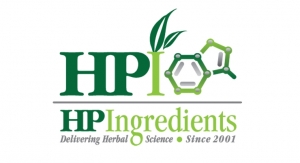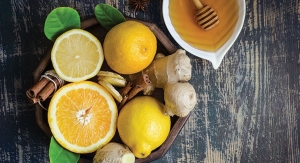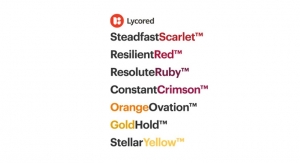By Sean Moloughney, Editor03.01.19
The science of aging and optimizing health continues to evolve as theories are revisited, challenged and reworked, or validated and expanded upon. Varying approaches to diet, exercise, and supplementation have proliferated (or failed), but ultimately, people seek balance as they juggle personal and professional responsibilities with environmental stresses and toxins.
Antioxidant theory is still evolving as researchers uncover new mechanisms and evaluate activity within the body. Truthful and responsible marketing must keep pace with science to ensure credibility of brands and the industry at large.
In the 1950s, researchers Rebeca Gerschman, Daniel Gilbert, and others working at the University of Rochester postulated that oxygen poisoning has mechanisms in common with X-ray radiation and that free radicals are involved (Science, 1954).
Their work paved the way for Denham Harman’s free radical theory of aging, published in the Journal of Gerontology in 1956, which stated “aging and the degenerative diseases associated with it are attributed basically to the deleterious side attacks of free radicals on cell constituents and on the connected tissues.”
Since then, many others have advanced the field and scientific understanding of aging, oxidative stress, cell signaling pathways, cellular redox, telomere shortening, and more.
Activity, Stress & Health
In plants, natural antioxidants have been known to defend biological structures against free radicals produced during photosynthetic light harvesting and oxygen production, said Tal Offer, PhD, carotenoids category manager at Lycored. “Over the years, the concept of free radicals as the ‘enemy’ evolved with new insights on their important role in signaling pathways related to proliferation or differentiation.
“Our body reacts with oxygen as we breathe and our cells produce energy while constantly producing highly reactive molecules,” she continued. “In humans, oxidants (which include free radicals and other reactive oxygen and nitrogen species) are generally produced during metabolic processes such as respiration, immune cell activation, inflammation, etc. Exposure to environmental pollutants, certain drugs, smoked meat, and radiation can also lead to production of oxidants.”
Oxidative stress occurs when there is an imbalance between the formation of oxidants and the ability of cells to clear them, usually leading to molecular and cellular damage, Offer said. “Oxidative damage has been implicated in the cause of many diseases, such as atherosclerosis, and has an impact on the body’s aging process.”
A cellular antioxidant defense system is based mainly on enzymatic components, such as superoxide dismutase (SOD), catalase (CAT), and glutathione peroxidase (GPx), to protect from oxidative cellular damage. Non-enzymatic antioxidants include molecules such as lipoic acid, glutathione, and CoQ10. “Beside these, there are several exogenous antioxidant molecules mainly introduced by diet or by nutritional supplementation,” said Offer.
As the gas essential to sustaining life, oxygen is used by cells to generate energy. At the same time, free radicals are formed in mitochondria. “The cellular redox process [oxidation-reduction] produces reactive oxygen species (ROS) and reactive nitrogen species (NOS),” said Shaheen Majeed, president worldwide, Sabinsa. “These reactive species play a vital role in various biological activities at low or moderate levels. But at high concentrations, they produce oxidative stress, a harmful process that can damage cell function and structures.”
“We now know that the level of reactive species is increased when exposed to adverse physicochemical, environmental, or pathological agents such as atmospheric pollutants, cigarette smoking, ultraviolet rays, radiation, toxic chemicals, over nutrition, and advanced glycation end products (AGEs) in diabetes,” he continued.
During World War II, the two atom bombs led to massive death, destruction, and reduced life span for survivors. Gershman and Gilbert speculated that the lethal and toxic effects of ionizing radiation might be due to cellular action of ROS. This event gave rise to the field of free radical biochemistry, Majeed noted.
“Free radicals have an adverse effect on lipids, proteins, DNA, and also on the aging process,” he said. “Protein damage leads to loss of enzyme activity and DNA damage can result in mutagenesis and carcinogenesis.”
Antioxidants may be able to neutralize free radicals or their activity. “Recent investigation shows that the body protects each cell by various mechanisms like superoxide dismutase (SOD), glutathione peroxidase, glutathione reductase, thioredoxin, thiols, and disulfide bonding,” said Majeed. “Building on this understanding, antioxidants have gained significant popularity owing to their numerous health benefits—combating oxidative stress, immune support, and other benefits related to heart, memory, eyes, joints, and the skin.”
In the early twentieth century, vitamins A, C, and E were identified as antioxidants, and it became clear that these compounds were essential for the health of living organisms, playing key roles in preventing reactions in the body that lead to oxidative stress, noted Andrew Wheeler, vice president of marketing, FutureCeuticals and Van Drunen Farms.
“In the last 40 years, research has consistently demonstrated that a healthy balance between free radicals and related oxidants is important to fuel the human body most optimally,” he said. “The research has illustrated that imbalances of free radicals and corresponding oxidants and antioxidants can be potentially harmful to the human body, resulting in oxidative stress.”
Leading to many pathophysiological conditions within the body, oxidative stress can be caused by highly unstable molecules that are created naturally by environmental factors like cigarette smoke, air pollution, and sunlight, or internal factors like consumption of unhealthy foods or stress from exercise.
Today, it’s now accepted that balance is key, and if a state of oxidative stress is prolonged, the risk for chronic and degenerative diseases will increase, according to Offer. “Optimum health is a measure of maintaining order within our bodies; when consuming a well-balanced diet we are likely to prevent disease and slow the aging process.”
The paradigm around oxidative stress and the potential to reduce it using antioxidants has dominated the last few decades of scientific debate, according to Fulvio Ursini from the Department of Molecular Medicine at the University of Padova, Italy, and Paolo Morazzoni, scientific advisor, Indena S.p.A. “This was particularly relevant in relation to mounting epidemiological evidence of the linkage between dietary intake of natural antioxidants and the decreased risk of chronic degenerative diseases.”
These basic concepts have encountered a recent evolution. “Modern thermodynamic considerations and further evidence of kinetic constraints for natural antioxidants definitively oriented scientists to review the basic concept of oxidative stress, and even more the modality of action of the majority of antioxidants themselves.”
Ursini and Morazzoni continued, “As a matter of fact, for a natural antioxidant, the most relevant mechanism to counteract active free radicals in vivo is to prevent their formation. This is obtained by maximizing the removal of hydrogen peroxide and lipid peroxides, the major sources of oxidant free radicals. These reactions are catalyzed by enzymes, which reduce substrates by using GSH or thioredoxin, which in turn are continuously reduced by NADPH. Moreover, these thiol-bearing compounds are also involved in non-radical nucleophilic reactions impacting enzyme function and regulation of gene expression. In this new light, for the first time, the concept of oxidative stress can be reframed in the scenario of a homeostatic control of ‘nucleophilic tone.’ A modern concept of antioxidants impacting health can be proposed highlighting the ability to control nucleophilic tone.”
Understanding Activity
Antioxidants continue to be an incredibly recognizable benefit that consumers of all types acknowledge as part of a healthy lifestyle, noted Melanie Bush, chief science officer, Artemis International. “That said, the scientific understanding of antioxidant ingredients has evolved, as well as the marketing of related functional food and dietary supplement products.”
Previous science was more focused on whether or not substances possessed antioxidant activity, and how much, she said. “Products started advertising ‘my antioxidant is stronger than your antioxidant.’ But over the last decade, the focus has shifted in the scientific community to how antioxidant substances are exerting their effects on the body and the related health benefits.”
There is also greater understanding about the relationship between health and the gut, relating to inflammation and free radical imbalances, and how certain antioxidant substances can modulate a healthy balance of these complicated systems and networks within the body, Bush added.
“Before, consumers may have sought out general antioxidants for overall well-being with a general understanding that they are ‘good for you’ and fight off ‘bad free radicals,’ but the trend now is toward more specificity in certain antioxidant compounds for particular health benefits (e.g., antioxidant-rich elderberry flavonoids for immune support).”
Carolina Burki-Sozzi, director of product development at Horphag Research, noted increased interest in antioxidant ingredients among consumers. “There is greater consumer understanding surrounding lifestyle factors—like diet, pollution, sun damage—that increase oxidative stress and cause cellular damage. We’ve noted a rise in interest of antioxidant research for healthy aging, including for skin health, cognitive function, joint health, and more.”
Branded ingredients are also gaining momentum in the category, she said, as consumers spend more time researching safe, evidence-based products and ingredients to meet their health needs.
Antioxidant understanding has developed significantly even in the last 15 years, according to Elyse Lovett, senior marketing manager, Kyowa Hakko, USA. “There was really limited science on the multiple benefits of antioxidants in a huge magnitude of categories. It was more science based, how they work based on the mechanism of action, with clinical research starting to trickle in. Over the past 15-20 years I think we have made major milestones with understanding how one antioxidant can have multiple benefits across the human body.”
Ultimately, high consumer awareness about antioxidants, supported by clinical research, has established a strong category of nutraceuticals, noted Majeed.
Targeting Age
Consumer interest in antioxidant products covers a wide demographic range, with people of all age groups aware of potential benefits, according to Majeed. “Moreover, as antioxidant product offerings are becoming more condition-specific, people with particular needs (e.g., joint or eye health, cardiovascular support, etc.) are showing plenty of interest in these supplements.”
With age, the human body tends to maintain carotenoid levels at a lower rate, therefore supplementation at age 50 and above makes sense, noted Offer, from Lycored. “Antioxidants can also be supportive from early life (from pregnancy/prenatal through childhood, focusing on growth and development). For example, lutein is an antioxidant which reaches the brain, supporting learning and memory.”
According to Wheeler, three groups of consumers are particularly interested in antioxidants: millennials, baby boomers, and active lifestyle users. “Millennials are seeking natural, whole food, and food transparency. They look for the repurposing or minimizing of food waste and are demanding food that is both healthy for them and the planet.”
On the other hand, baby boomers seek preventive functional food and beverages for healthy aging and longevity, rather than traditional treatments. “Lastly, there are the lifestyle users who are interested in sports nutrition, performance benefits, and overall wellness. Although these three groups may have different motivations for being drawn to antioxidant products, they all seek natural, scientifically validated claims.”
Burki-Sozzi agreed that consumer interest in antioxidant products ranges across generations. “Currently, we are seeing baby boomers drive sales growth. Reports show that older generations are primary drivers of growth for vitamin and supplement sales in general, and there is a particular focus on supplement benefits for healthy aging.”
Lovett noted that consumer motivations often vary based on age. “The gen Xers could be looking for those detoxification/skin health benefits as well as new innovative ingredients (and delivery forms) to get their daily multivitamin, while baby boomers are looking for more ways to support things like cardiovascular health and mental energy. And of course, these days everyone is looking for ingredients that can boost their immune health.”
Nearly everyone can benefit from antioxidants, said Ramon Luna, marketing coordinator, Ecuadorian Rainforest, LLC, but antioxidants are especially important for adults. “Antioxidants are known to help combat free radicals found in the body, those atoms with one electron looking for another pair and which may have an effect on aging. This leaves open an entire market for those looking to make skin care products—not just topical ones. Antioxidant-containing dietary supplements are on the rise. Many of these consumers will be looking toward anti-aging antioxidant products in their 20s and 30s to support their skin health as they grow older.”
Several years ago McCormick & Company created an advertising campaign touting antioxidants in several spices, which served to increase consumer knowledge and awareness, according to Annie Eng, CEO, HP Ingredients. “Mass-market cosmetic and body care companies have also been messaging about how antioxidants applied topically help nourish the skin. So, with those in mind, it truly appears that all demographics know they can benefit from antioxidants.”
Given the fact that most people fail to meet minimum nutrient requirements from diet alone, John Sauve, vice president of marketing and business development, Artemis, said, “Americans of all types would benefit from antioxidant supplementation consumed in a variety of different forms and formats. Key would not be the type of consumer but rather the type and the validated source of the antioxidant product being marketed with its related statements and claims.”
Moderation & Balance
The human body wants balance. “And as such, it has efficient systems and safeguards in place to establish that balance,” according to Bush, from Artemis. “For example, vitamin C is a common vitamin supplement that is often taken to support immune function. However, if ‘too much’ is consumed at one time, the body utilizes what is needed and then discards the rest to be eliminated in the urine. That said, the old adage ‘moderation is key’ does hold weight when it comes to any sort of supplementation.
“The goal is to supplement to give your body what it normally should be getting through diet and to account for any deficiencies so it can function optimally,” she continued. “This does not mean overloading with antioxidant products, assuming there is an endless cumulative benefit. Again, the body will ultimately seek balance, and extreme excess could either be eliminated or it could trigger pro-oxidant activity. But even otherwise healthy people could find benefit from antioxidant products because our environments, stress levels, sleep patterns, and diet choices could all negatively influence that oxidant-antioxidant balance.”
Good-quality, science-backed ingredients administered at efficacious dosages are critical to product development, according to Lovett from Kyowa Hakko. “Most of the antioxidants on the market are found either in the foods we eat or made endogenously in our body, so I think antioxidants are a great choice for healthy people trying to achieve specific health benefits compared to some of the ‘newer’ ingredients on the market that may not have human clinical studies.”
Antioxidants have always been present in everyday food, including fruits, vegetables, omega fatty acids, spices, and more, noted Majeed. “The human body is in a constant state of metabolic reactions, several of which generate free radicals. Free radicals need to be quenched since they are in a charged form otherwise and can cause damage to cells, tissues, and vital organs.”
The human system has the potential to quench these free radicals, but only to a certain extent, he added. “With demanding, stressful lifestyles, the quantum of free radical generation is observed to be very high and can be effectively controlled only with the use of antioxidants. Unfortunately, some consumers have the idea that antioxidants can be unhealthy based upon wide media reporting of a badly designed study on vitamin E some years ago, which painted the category with a broad brush. Today, natural antioxidants have more than a history of traditional use, with the support of solid data from modern scientific research showing safety and efficacy.”
According to Ursini, from the University of Padova, and Morazzoni from Indena, unrealistic doses of any compound can become toxic. “Considering the impact of antioxidants on nucleophilic tone, the recent scenario is keen to support evidence that oxidized antioxidants may have a beneficial effect rather than their reduced forms. This is because the electrophiles, produced when antioxidants are oxidized, prime the increase of the nucleophilic tone. This confirms that it is not the antioxidative potential of the antioxidants playing a major role in health improvement, but rather their capacity to regulate cell signaling processes, transcription factors activities, and other determinants of gene expression.”
Potent Controversy
Antioxidant-rich materials, like fruits and vegetables, have traditionally been measured for their antioxidant capacity or potential using in vitro (outside the body) chemical assays such as ORAC (Oxygen Radical Absorbance Capacity) or FRAP (Ferric Reducing Antioxidant Power), noted Wheeler from FutureCeuticals/Van Drunen.
“Unfortunately, high ORAC/FRAP scores have not been reliably shown to translate into any measurable bioactivity within the human body,” said Wheeler. “This disparity eventually prompted the U.S. Department of Agriculture (USDA) to remove ORAC values from its website, leaving consumers questioning the true benefits of antioxidants and companies searching for a way to reliably measure antioxidant activity within the human body.”
Still, science suggests that consuming antioxidant-rich foods is “probably a good idea,” according to Steven Dentali, PhD, Dentali Botanical Sciences. “The myth is that the effect is a direct one.
Contrary to popular belief, a higher antioxidant value does not necessarily correlate with a greater health benefit.”
In fact, authors of an article published in Nutrition in 2014 argued that use of antioxidant values, such as those obtained by ORAC testing to support health-benefit statements, should be discouraged.
Antioxidant measurements of specific compounds, including polyphenols, have not been shown to be relevant to human health, prompting the USDA to take down its ORAC Database for Selected Foods in 2012. An editorial published in the Journal of Food Composition and Analysis (2017) announced that the journal is no longer accepting papers that use antioxidant assays, Dentali noted. “The reality is that control of the body’s antioxidant defense happens via antioxidant enzymes, not directly by small molecules with high ORAC values,” (Redox Biology, 2015).
“The 1985 publication of Oxidative Stress by Helmut Sies may have kicked off what became the myth that consuming antioxidants will always directly counter free radical damage, thereby yielding a health benefit. The complicated reality behind the simple myth is found in the field of redox biology whereby genes are regulated,” Dentali said. “We aren’t beakers of free radicals able to be quenched by adding antioxidants. We are complicated systems where polyphenols and other molecules have parts to play. A recent publication on carotenoids (Journal of Agricultural and Food Chemistry, 2018) demonstrates this complexity by examining patterns of its activity with the body’s antioxidant enzyme activity.”
The “antioxidant myth” is appealing because it’s much simpler than trying to understand the “redox code,” (Antioxidants & Redox Signaling, 2015). However, as noted in the article on carotenoids, “Classic nutrition believed that healthy diets should simply provide sufficient antioxidant loads to organisms, to hamper free radical processes and avoid oxidative stress. Current redox biology was proven much more intricate.”
ORAC value doesn’t simply translate to higher potency, and therefore greater health benefit, Dentali added.
The ORAC method does measure the ability of an ingredient to quench free radicals in a test tube, noted Offer. “The amount of inhibition of this oxidation is measured relative to a fluorescent dye, yielding a score that represents the antioxidant capacity of the sample.”
Water-soluble antioxidants (vitamin C) and fat-soluble antioxidants (vitamin E) work differently, she added. “Chemical estimates of antioxidant capacity within the test tube may not accurately reflect the complex nature of the full antioxidant activity within cells. Although ORAC is a known method to evaluate antioxidant activity, it does not directly reflect the capacities of reducing LDL oxidation in the body.”
Companies should provide a complete picture of an antioxidant based on the totality of research on not just its activities against certain radicals, but also its targeted mechanisms in certain health conditions, as proven by clinical studies, Offer suggested.
“I’ve been receiving questions like ‘which is the best antioxidant?’ or concerns about the pro-oxidative effects of a single antioxidant. Since not all antioxidants function in the same way, I think that comparisons would increase the ongoing confusion. Instead, we should focus on the synergistic health benefits of the whole food and its phytochemical components as opposed to the limited effect of intake of isolated constituents.”
Burki-Sozzi said there are many products on the market featuring claims that seem too good to be true, and “most of the time, that’s the case.”
There have been many developments in testing methods to determine antioxidant activity, according to Sabinsa’s Majeed. “In the beginning, only a handful of analytical standards were available to quantify antioxidant activity. Over a period of time, various newer techniques and analytical tools, such as spectroscopy (e.g., ORAC, DPPH, ABTS, FRAP), electro-chemical methods (e.g., voltammetry, amperometry), and chromatography techniques (e.g., gas chromatography, high-performance liquid chromatography) have been developed to determine the antioxidant profile of various ingredients.”
However, each assay has a unique method in assessing antioxidant activity and may not be able to identify all types of antioxidants, he added. “There is debate going on in the industry and scientific community regarding the validity of various methods when it comes to translating the observed in vitro activity into biological effect.”
Generally speaking, Sauve from Artemis opined that the somewhat controversial nature of antioxidants has related more to ORAC than anything else. “The original USDA-ORAC assay that identified and ranked the ‘antioxidant capacity’ of hundreds of food items drove the awareness and interest in ‘dietary antioxidants’ to new heights back in the mid 90s. There was growing interest surrounding ORAC (and other similar assays), antioxidants, and their ability to scavenge free radicals that cause cell damage, and that interest remained relatively strong through 2010.
“At that point, the USDA, after assessing a number of issues (and likely complaints), decided to discontinue its reporting and ranking of ORAC due to what it said were issues related to how the data and information was being interpreted and marketed,” he continued.
Coverage of the USDA decision and subsequent debate around the value of the assays provided fodder for an ongoing debate regarding antioxidants and health, Sauve said. “A number of scientifically sound ‘antioxidant activity’ related assays, including next generation ORAC, continue to be referenced and remain important and influential in helping the food (and dietary supplement) industry both assess and report meaningful information about their products.”
Sources & Science
In recent years, consumer interest in overall health and wellness has prompted a large-scale shift in consumer behavior that includes revitalized interest in antioxidant benefits.
“While synthetic varieties still make up a solid portion of the antioxidant ingredient market, natural antioxidants are spurring major growth in the category fueled by key consumer movements toward clean, plant-based and functional ingredients,” noted Wheeler from FutureCeuticals/Van Drunen. “Clean label is king, in every category.”
Transparency matters too, he added. “The antioxidant category has been bombarded by adulteration concerns, and to a degree has become saturated with generic, broad-stroke antioxidant claims. To meet high consumer expectations, it is necessary to pull back the curtain and provide transparency.”
Heightened consumer expectations have propelled demand for clinically researched ingredients that possess documented antioxidant action in humans at a moderate, yet effective dose, Wheeler said. “Consumers are more educated, and realize that to maximize these benefits, the quality, dosage, and source of the antioxidant is extremely important.”
A study published in Food Science & Nutrition in 2014 concluded for the first time that the synergistic, biological effects of a plant-based supplement (Spectra) were shown to simultaneously inhibit free radical production, optimize cellular metabolism, and increase nitric oxide (NO) levels within the body. “Other fruit, vegetable and herbal concentrates and extracts have only been able to cite antioxidant potential,” Wheeler said.
Berries continue to get significant attention in the antioxidant category, in part due to their versatility, specific health benefits, and familiar status among consumers, noted Bush, from Artemis. “We have often heard the phrase ‘eat your colors,’ suggesting natural vibrant colors in foods indicate they are healthy options. The color pigments in berries that give them their rich red-purple-black colors are called anthocyanins, and these compounds are in fact extremely potent antioxidants.”
More consumers are opting for natural, simple product formulations, Bush added. “The messaging with berries is simple and clear, and they are easy to formulate with.” They also contribute to a multitude of health benefits. “It is exciting to see some berries in particular reaching momentous popularity and awareness, even in the mainstream media. For example, elderberry (Sambucus nigra) offers clinically studied health benefits with immune support, specifically against influenza. Elderberry is experiencing a boom of activity among product manufacturers, consumers, and practitioners alike.”
Additionally, Aronia berry (Aronia melanocarpa) is well positioned for the heart health market, Bush claimed. “There is no end in sight for the excitement about berries. Their staying power is real as science continues to unfold.”
According to Offer, from Lycored, older age was associated with lower lycopene and alpha-, beta-carotene in a study that followed antioxidant blood levels in the European multicenter study MARK-AGE (Oxidative Medicine and Cellular Longevity, 2017).
“Various factors may influence the bioavailability of micronutrients, including lifestyle, food preparation, fat intake, and interactions between nutrients and drugs,” Offer noted. “Carotenoid antioxidants are lipophilic substances stored in adipose tissue (fat). It is possible that different storage patterns in various organs during aging are responsible for the changes observed in older subjects. In addition, the increased demand of antioxidants with age may result in the reduction in levels in an aging population. This explains why it’s crucial for older adults to follow a rich diet and supplementation regimen in order to experience its positive effects.”
Overall, the natural antioxidants market mainly includes carotenoids, vitamins C and E, and polyphenols, Offer said. The vitamin C segment accounts for the largest share of natural antioxidants in recent years and is expected to lead the overall market. Other trending antioxidants include fruit extracts, which consist of specific molecules that reach the target tissue and reduce intracellular oxidative stress, she said.
Glutathione, often referred to as a master antioxidant, according to Lovett from Kyowa Hakko, is recognized for multiple benefits. “Although glutathione is made endogenously in the body, levels decrease with stress, age, lifestyle, and environmental factors, so supplementation is important.”
Kyowa Hakko’s Setria branded glutathione is made from a patented fermentation process to yield high purity and high quality, and is backed by multiple clinical studies for health claims and oral absorption efficacy. “Setria Glutathione supports immune health, detoxification, skin health, and free radical support,” said Lovett.
Studies have suggested that curcuminoids exert strong antioxidant activity against lipid peroxidation, hydroxyl, and superoxide radicals, and improved activities of enzymatic antioxidants, according to Majeed from Sabinsa, which markets Curcumin C3 Complex, a patented natural turmeric root extract standardized to a minimum of 95% curcuminoids.
In a randomized, double-blind, placebo-controlled trial, 3-month supplementation of curcuminoids and piperine (a standardized black pepper extract from Sabinsa branded as BioPerine, intended to enhance bioavailability) in 118 diabetic patients resulted in a significant increase in serum total antioxidant capacity and SOD activity (p<0.001, both), whereas serum MDA level was found to be significantly decreased (p<0.001) compared to placebo group (Inflammopharmacology, 2017).
Resveratrol, a plant polyphenol, is another well-known natural antioxidant. “Resveratrol has been known to provide protection against a variety of health conditions, including aging,” said Majeed. “Other intriguing research indicated resveratrol was found to be helpful in improving mitochondrial performance during low-intensity exercise training in healthy adults.”
In a double-blind, placebo-controlled clinical trial, 4 weeks of resveratrol (1,000 mg) supplementation along with piperine (20 mg) demonstrated a significant recovery of muscle oxidative capacity after a short bout of voluntary exercise when compared to placebo group (Applied Physiology, Nutrition, and Metabolism, 2016).
Sabinsa’s Saberry is obtained from the fruits of Emblica officinalis (Amla) and standardized for a minimum of 10% beta-glucogallin. “Saberry is a leader among water-soluble phytonutrients in terms of broad-spectrum antioxidant activity,” Majeed said.
Burki-Sozzi noted that Pycnogenol French maritime pine bark extract has been shown to benefit circulation, joints, eyes, respiratory health, and more, “making it a wise choice for consumers looking for an ingredient that offers all-around benefits.”
A 2018 study published in Minerva Cardioangiologica revealed that Pycnogenol is effective in reducing lower leg swelling, known as edema, and relieving jet lag on long-haul flights and road trips. Another study published in Minerva Medica in 2018 noted Pycnogenol can be instrumental in improving the symptoms of mild cognitive impairment, a potential risk factor for early onset dementia and other degenerative cognitive conditions.
Polyphenols in Pycnogenol are also directly distributed into joint synovial fluid to inhibit nuclear factor-kappa B to reduce inflammation at the source, according to a 2017 study published in MDPI’s journal Nutrients. And a 2016 study published in the Journal on Orthopedics and Traumatology showed Pycnogenol’s benefits for curbing age-related muscle loss. The study showed significant improvement in muscular function and reduction of oxidative stress, according to Burki-Sozzi.
Pycnogenol has an extensive portfolio of skin health benefits too as demonstrated in a study published in Panminerva Medica in 2014 that showed it significantly improved the painful and visible symptoms of psoriasis, including redness, flaking, thickness and total surface area of affected skin patches—a huge benefit for the nearly 8 million Americans impacted by this autoimmune disease.
Annie Eng, CEO, HP Ingredients, said the company’s Bergamonte contains bioactive compounds extracted from the juice and albedo of Citrus bergamia Risso, standardized to >38% polyphenolic flavonoids, consisting of naringin, neohesperidin, neoeriocitrin, 1% melitidin, and 2% brutieridin. Bergamonte is produced using patented extraction technology through collaborative works of various universities and research institutions in Italy.
“These flavonoids are clinically proven to help maintain healthy cholesterol levels, healthy blood glucose level, increase HDL-cholesterol, and promote healthy weight management,” said Eng.
The company recently launched a “new and improved” version of Bergamonte (BPE-C), which has also been clinically tested. “Researchers found the new Bergamonte to be able to retain its ability to regulate cholesterol and blood glucose levels (as it still has the same flavonoid profile of naringin, neohesperidin, neoeriocitrin, melitidin, and brutelidin), and the study also shows it has a significant favorable impact on body weight and metabolic syndrome.
The study, which is being prepared for journal publication, has shown favorable impact on hormones that influence metabolic syndrome, specifically, a strong increase in leptin (12.3% with 650 mg BPE-C and 21.36% with 1,300 mg); decrease in ghrelin (6.89%, 650 mg, and 14.9% with 1,300 mg), and an increase in adiponectin (18.65% with 650 mg), and 21.76% with 1,300 mg), according to Eng.
“Some antioxidants are condition-specific, which opens up terrific formulation opportunities, such as lutein and zeaxanthin for vision-support beverages, lycopene for men’s health products, and Bergamonte for weight-management/metabolic syndrome support,” she said.
People are seeking functional foods and beverages to obtain therapeutic levels of nutraceuticals beyond simply fulfilling nutritional needs (e.g., vitamins, minerals). “Antioxidants are versatile, sustainable and have great stories,” said Eng.
Efficient antioxidants should be able to control “nucleophilic tone,” according to Ursini from the University of Padova, and Morazzoni from Indena. Typically, polyphenols such as curcumin, along with other reactive, secondary plant metabolites (e.g., carnosic acid, cynaropicrin, isothiocyanates) are able to start the process either directly or upon oxidation.
“They react with a cysteine residue of the ‘sensor’ protein Keap1, inducing Nrf2 to be released in the cytosol and then transferred to the nucleus where the antioxidant or electrophile response element (ARE) is finally activated, leading to the increased expression of genes, increasing the nucleophilic tone, and thus preventing an alteration of homeostasis due to an excess of response,” they said.
This control system has been developed as a cellular response, named “para-hormesis,” by animal species living in an oxygen-rich environment and using oxidation as a mechanism of defense and signaling. “In this scenario, modern diseases are seen as the outcome of an excess of response to a challenge,” they added. “Optimizing the response prevents the homeostatic imbalance we identify as a disease. In this light, the effect is similar to a panacea of nutritional antioxidants and the absence of a single and specific target, which is typical of drugs.”
Antioxidant theory is still evolving as researchers uncover new mechanisms and evaluate activity within the body. Truthful and responsible marketing must keep pace with science to ensure credibility of brands and the industry at large.
In the 1950s, researchers Rebeca Gerschman, Daniel Gilbert, and others working at the University of Rochester postulated that oxygen poisoning has mechanisms in common with X-ray radiation and that free radicals are involved (Science, 1954).
Their work paved the way for Denham Harman’s free radical theory of aging, published in the Journal of Gerontology in 1956, which stated “aging and the degenerative diseases associated with it are attributed basically to the deleterious side attacks of free radicals on cell constituents and on the connected tissues.”
Since then, many others have advanced the field and scientific understanding of aging, oxidative stress, cell signaling pathways, cellular redox, telomere shortening, and more.
Activity, Stress & Health
In plants, natural antioxidants have been known to defend biological structures against free radicals produced during photosynthetic light harvesting and oxygen production, said Tal Offer, PhD, carotenoids category manager at Lycored. “Over the years, the concept of free radicals as the ‘enemy’ evolved with new insights on their important role in signaling pathways related to proliferation or differentiation.
“Our body reacts with oxygen as we breathe and our cells produce energy while constantly producing highly reactive molecules,” she continued. “In humans, oxidants (which include free radicals and other reactive oxygen and nitrogen species) are generally produced during metabolic processes such as respiration, immune cell activation, inflammation, etc. Exposure to environmental pollutants, certain drugs, smoked meat, and radiation can also lead to production of oxidants.”
Oxidative stress occurs when there is an imbalance between the formation of oxidants and the ability of cells to clear them, usually leading to molecular and cellular damage, Offer said. “Oxidative damage has been implicated in the cause of many diseases, such as atherosclerosis, and has an impact on the body’s aging process.”
A cellular antioxidant defense system is based mainly on enzymatic components, such as superoxide dismutase (SOD), catalase (CAT), and glutathione peroxidase (GPx), to protect from oxidative cellular damage. Non-enzymatic antioxidants include molecules such as lipoic acid, glutathione, and CoQ10. “Beside these, there are several exogenous antioxidant molecules mainly introduced by diet or by nutritional supplementation,” said Offer.
As the gas essential to sustaining life, oxygen is used by cells to generate energy. At the same time, free radicals are formed in mitochondria. “The cellular redox process [oxidation-reduction] produces reactive oxygen species (ROS) and reactive nitrogen species (NOS),” said Shaheen Majeed, president worldwide, Sabinsa. “These reactive species play a vital role in various biological activities at low or moderate levels. But at high concentrations, they produce oxidative stress, a harmful process that can damage cell function and structures.”
“We now know that the level of reactive species is increased when exposed to adverse physicochemical, environmental, or pathological agents such as atmospheric pollutants, cigarette smoking, ultraviolet rays, radiation, toxic chemicals, over nutrition, and advanced glycation end products (AGEs) in diabetes,” he continued.
During World War II, the two atom bombs led to massive death, destruction, and reduced life span for survivors. Gershman and Gilbert speculated that the lethal and toxic effects of ionizing radiation might be due to cellular action of ROS. This event gave rise to the field of free radical biochemistry, Majeed noted.
“Free radicals have an adverse effect on lipids, proteins, DNA, and also on the aging process,” he said. “Protein damage leads to loss of enzyme activity and DNA damage can result in mutagenesis and carcinogenesis.”
Antioxidants may be able to neutralize free radicals or their activity. “Recent investigation shows that the body protects each cell by various mechanisms like superoxide dismutase (SOD), glutathione peroxidase, glutathione reductase, thioredoxin, thiols, and disulfide bonding,” said Majeed. “Building on this understanding, antioxidants have gained significant popularity owing to their numerous health benefits—combating oxidative stress, immune support, and other benefits related to heart, memory, eyes, joints, and the skin.”
In the early twentieth century, vitamins A, C, and E were identified as antioxidants, and it became clear that these compounds were essential for the health of living organisms, playing key roles in preventing reactions in the body that lead to oxidative stress, noted Andrew Wheeler, vice president of marketing, FutureCeuticals and Van Drunen Farms.
“In the last 40 years, research has consistently demonstrated that a healthy balance between free radicals and related oxidants is important to fuel the human body most optimally,” he said. “The research has illustrated that imbalances of free radicals and corresponding oxidants and antioxidants can be potentially harmful to the human body, resulting in oxidative stress.”
Leading to many pathophysiological conditions within the body, oxidative stress can be caused by highly unstable molecules that are created naturally by environmental factors like cigarette smoke, air pollution, and sunlight, or internal factors like consumption of unhealthy foods or stress from exercise.
Today, it’s now accepted that balance is key, and if a state of oxidative stress is prolonged, the risk for chronic and degenerative diseases will increase, according to Offer. “Optimum health is a measure of maintaining order within our bodies; when consuming a well-balanced diet we are likely to prevent disease and slow the aging process.”
The paradigm around oxidative stress and the potential to reduce it using antioxidants has dominated the last few decades of scientific debate, according to Fulvio Ursini from the Department of Molecular Medicine at the University of Padova, Italy, and Paolo Morazzoni, scientific advisor, Indena S.p.A. “This was particularly relevant in relation to mounting epidemiological evidence of the linkage between dietary intake of natural antioxidants and the decreased risk of chronic degenerative diseases.”
These basic concepts have encountered a recent evolution. “Modern thermodynamic considerations and further evidence of kinetic constraints for natural antioxidants definitively oriented scientists to review the basic concept of oxidative stress, and even more the modality of action of the majority of antioxidants themselves.”
Ursini and Morazzoni continued, “As a matter of fact, for a natural antioxidant, the most relevant mechanism to counteract active free radicals in vivo is to prevent their formation. This is obtained by maximizing the removal of hydrogen peroxide and lipid peroxides, the major sources of oxidant free radicals. These reactions are catalyzed by enzymes, which reduce substrates by using GSH or thioredoxin, which in turn are continuously reduced by NADPH. Moreover, these thiol-bearing compounds are also involved in non-radical nucleophilic reactions impacting enzyme function and regulation of gene expression. In this new light, for the first time, the concept of oxidative stress can be reframed in the scenario of a homeostatic control of ‘nucleophilic tone.’ A modern concept of antioxidants impacting health can be proposed highlighting the ability to control nucleophilic tone.”
Understanding Activity
Antioxidants continue to be an incredibly recognizable benefit that consumers of all types acknowledge as part of a healthy lifestyle, noted Melanie Bush, chief science officer, Artemis International. “That said, the scientific understanding of antioxidant ingredients has evolved, as well as the marketing of related functional food and dietary supplement products.”
Previous science was more focused on whether or not substances possessed antioxidant activity, and how much, she said. “Products started advertising ‘my antioxidant is stronger than your antioxidant.’ But over the last decade, the focus has shifted in the scientific community to how antioxidant substances are exerting their effects on the body and the related health benefits.”
There is also greater understanding about the relationship between health and the gut, relating to inflammation and free radical imbalances, and how certain antioxidant substances can modulate a healthy balance of these complicated systems and networks within the body, Bush added.
“Before, consumers may have sought out general antioxidants for overall well-being with a general understanding that they are ‘good for you’ and fight off ‘bad free radicals,’ but the trend now is toward more specificity in certain antioxidant compounds for particular health benefits (e.g., antioxidant-rich elderberry flavonoids for immune support).”
Carolina Burki-Sozzi, director of product development at Horphag Research, noted increased interest in antioxidant ingredients among consumers. “There is greater consumer understanding surrounding lifestyle factors—like diet, pollution, sun damage—that increase oxidative stress and cause cellular damage. We’ve noted a rise in interest of antioxidant research for healthy aging, including for skin health, cognitive function, joint health, and more.”
Branded ingredients are also gaining momentum in the category, she said, as consumers spend more time researching safe, evidence-based products and ingredients to meet their health needs.
Antioxidant understanding has developed significantly even in the last 15 years, according to Elyse Lovett, senior marketing manager, Kyowa Hakko, USA. “There was really limited science on the multiple benefits of antioxidants in a huge magnitude of categories. It was more science based, how they work based on the mechanism of action, with clinical research starting to trickle in. Over the past 15-20 years I think we have made major milestones with understanding how one antioxidant can have multiple benefits across the human body.”
Ultimately, high consumer awareness about antioxidants, supported by clinical research, has established a strong category of nutraceuticals, noted Majeed.
Targeting Age
Consumer interest in antioxidant products covers a wide demographic range, with people of all age groups aware of potential benefits, according to Majeed. “Moreover, as antioxidant product offerings are becoming more condition-specific, people with particular needs (e.g., joint or eye health, cardiovascular support, etc.) are showing plenty of interest in these supplements.”
With age, the human body tends to maintain carotenoid levels at a lower rate, therefore supplementation at age 50 and above makes sense, noted Offer, from Lycored. “Antioxidants can also be supportive from early life (from pregnancy/prenatal through childhood, focusing on growth and development). For example, lutein is an antioxidant which reaches the brain, supporting learning and memory.”
According to Wheeler, three groups of consumers are particularly interested in antioxidants: millennials, baby boomers, and active lifestyle users. “Millennials are seeking natural, whole food, and food transparency. They look for the repurposing or minimizing of food waste and are demanding food that is both healthy for them and the planet.”
On the other hand, baby boomers seek preventive functional food and beverages for healthy aging and longevity, rather than traditional treatments. “Lastly, there are the lifestyle users who are interested in sports nutrition, performance benefits, and overall wellness. Although these three groups may have different motivations for being drawn to antioxidant products, they all seek natural, scientifically validated claims.”
Burki-Sozzi agreed that consumer interest in antioxidant products ranges across generations. “Currently, we are seeing baby boomers drive sales growth. Reports show that older generations are primary drivers of growth for vitamin and supplement sales in general, and there is a particular focus on supplement benefits for healthy aging.”
Lovett noted that consumer motivations often vary based on age. “The gen Xers could be looking for those detoxification/skin health benefits as well as new innovative ingredients (and delivery forms) to get their daily multivitamin, while baby boomers are looking for more ways to support things like cardiovascular health and mental energy. And of course, these days everyone is looking for ingredients that can boost their immune health.”
Nearly everyone can benefit from antioxidants, said Ramon Luna, marketing coordinator, Ecuadorian Rainforest, LLC, but antioxidants are especially important for adults. “Antioxidants are known to help combat free radicals found in the body, those atoms with one electron looking for another pair and which may have an effect on aging. This leaves open an entire market for those looking to make skin care products—not just topical ones. Antioxidant-containing dietary supplements are on the rise. Many of these consumers will be looking toward anti-aging antioxidant products in their 20s and 30s to support their skin health as they grow older.”
Several years ago McCormick & Company created an advertising campaign touting antioxidants in several spices, which served to increase consumer knowledge and awareness, according to Annie Eng, CEO, HP Ingredients. “Mass-market cosmetic and body care companies have also been messaging about how antioxidants applied topically help nourish the skin. So, with those in mind, it truly appears that all demographics know they can benefit from antioxidants.”
Given the fact that most people fail to meet minimum nutrient requirements from diet alone, John Sauve, vice president of marketing and business development, Artemis, said, “Americans of all types would benefit from antioxidant supplementation consumed in a variety of different forms and formats. Key would not be the type of consumer but rather the type and the validated source of the antioxidant product being marketed with its related statements and claims.”
Moderation & Balance
The human body wants balance. “And as such, it has efficient systems and safeguards in place to establish that balance,” according to Bush, from Artemis. “For example, vitamin C is a common vitamin supplement that is often taken to support immune function. However, if ‘too much’ is consumed at one time, the body utilizes what is needed and then discards the rest to be eliminated in the urine. That said, the old adage ‘moderation is key’ does hold weight when it comes to any sort of supplementation.
“The goal is to supplement to give your body what it normally should be getting through diet and to account for any deficiencies so it can function optimally,” she continued. “This does not mean overloading with antioxidant products, assuming there is an endless cumulative benefit. Again, the body will ultimately seek balance, and extreme excess could either be eliminated or it could trigger pro-oxidant activity. But even otherwise healthy people could find benefit from antioxidant products because our environments, stress levels, sleep patterns, and diet choices could all negatively influence that oxidant-antioxidant balance.”
Good-quality, science-backed ingredients administered at efficacious dosages are critical to product development, according to Lovett from Kyowa Hakko. “Most of the antioxidants on the market are found either in the foods we eat or made endogenously in our body, so I think antioxidants are a great choice for healthy people trying to achieve specific health benefits compared to some of the ‘newer’ ingredients on the market that may not have human clinical studies.”
Antioxidants have always been present in everyday food, including fruits, vegetables, omega fatty acids, spices, and more, noted Majeed. “The human body is in a constant state of metabolic reactions, several of which generate free radicals. Free radicals need to be quenched since they are in a charged form otherwise and can cause damage to cells, tissues, and vital organs.”
The human system has the potential to quench these free radicals, but only to a certain extent, he added. “With demanding, stressful lifestyles, the quantum of free radical generation is observed to be very high and can be effectively controlled only with the use of antioxidants. Unfortunately, some consumers have the idea that antioxidants can be unhealthy based upon wide media reporting of a badly designed study on vitamin E some years ago, which painted the category with a broad brush. Today, natural antioxidants have more than a history of traditional use, with the support of solid data from modern scientific research showing safety and efficacy.”
According to Ursini, from the University of Padova, and Morazzoni from Indena, unrealistic doses of any compound can become toxic. “Considering the impact of antioxidants on nucleophilic tone, the recent scenario is keen to support evidence that oxidized antioxidants may have a beneficial effect rather than their reduced forms. This is because the electrophiles, produced when antioxidants are oxidized, prime the increase of the nucleophilic tone. This confirms that it is not the antioxidative potential of the antioxidants playing a major role in health improvement, but rather their capacity to regulate cell signaling processes, transcription factors activities, and other determinants of gene expression.”
Potent Controversy
Antioxidant-rich materials, like fruits and vegetables, have traditionally been measured for their antioxidant capacity or potential using in vitro (outside the body) chemical assays such as ORAC (Oxygen Radical Absorbance Capacity) or FRAP (Ferric Reducing Antioxidant Power), noted Wheeler from FutureCeuticals/Van Drunen.
“Unfortunately, high ORAC/FRAP scores have not been reliably shown to translate into any measurable bioactivity within the human body,” said Wheeler. “This disparity eventually prompted the U.S. Department of Agriculture (USDA) to remove ORAC values from its website, leaving consumers questioning the true benefits of antioxidants and companies searching for a way to reliably measure antioxidant activity within the human body.”
Still, science suggests that consuming antioxidant-rich foods is “probably a good idea,” according to Steven Dentali, PhD, Dentali Botanical Sciences. “The myth is that the effect is a direct one.
Contrary to popular belief, a higher antioxidant value does not necessarily correlate with a greater health benefit.”
In fact, authors of an article published in Nutrition in 2014 argued that use of antioxidant values, such as those obtained by ORAC testing to support health-benefit statements, should be discouraged.
Antioxidant measurements of specific compounds, including polyphenols, have not been shown to be relevant to human health, prompting the USDA to take down its ORAC Database for Selected Foods in 2012. An editorial published in the Journal of Food Composition and Analysis (2017) announced that the journal is no longer accepting papers that use antioxidant assays, Dentali noted. “The reality is that control of the body’s antioxidant defense happens via antioxidant enzymes, not directly by small molecules with high ORAC values,” (Redox Biology, 2015).
“The 1985 publication of Oxidative Stress by Helmut Sies may have kicked off what became the myth that consuming antioxidants will always directly counter free radical damage, thereby yielding a health benefit. The complicated reality behind the simple myth is found in the field of redox biology whereby genes are regulated,” Dentali said. “We aren’t beakers of free radicals able to be quenched by adding antioxidants. We are complicated systems where polyphenols and other molecules have parts to play. A recent publication on carotenoids (Journal of Agricultural and Food Chemistry, 2018) demonstrates this complexity by examining patterns of its activity with the body’s antioxidant enzyme activity.”
The “antioxidant myth” is appealing because it’s much simpler than trying to understand the “redox code,” (Antioxidants & Redox Signaling, 2015). However, as noted in the article on carotenoids, “Classic nutrition believed that healthy diets should simply provide sufficient antioxidant loads to organisms, to hamper free radical processes and avoid oxidative stress. Current redox biology was proven much more intricate.”
ORAC value doesn’t simply translate to higher potency, and therefore greater health benefit, Dentali added.
The ORAC method does measure the ability of an ingredient to quench free radicals in a test tube, noted Offer. “The amount of inhibition of this oxidation is measured relative to a fluorescent dye, yielding a score that represents the antioxidant capacity of the sample.”
Water-soluble antioxidants (vitamin C) and fat-soluble antioxidants (vitamin E) work differently, she added. “Chemical estimates of antioxidant capacity within the test tube may not accurately reflect the complex nature of the full antioxidant activity within cells. Although ORAC is a known method to evaluate antioxidant activity, it does not directly reflect the capacities of reducing LDL oxidation in the body.”
Companies should provide a complete picture of an antioxidant based on the totality of research on not just its activities against certain radicals, but also its targeted mechanisms in certain health conditions, as proven by clinical studies, Offer suggested.
“I’ve been receiving questions like ‘which is the best antioxidant?’ or concerns about the pro-oxidative effects of a single antioxidant. Since not all antioxidants function in the same way, I think that comparisons would increase the ongoing confusion. Instead, we should focus on the synergistic health benefits of the whole food and its phytochemical components as opposed to the limited effect of intake of isolated constituents.”
Burki-Sozzi said there are many products on the market featuring claims that seem too good to be true, and “most of the time, that’s the case.”
There have been many developments in testing methods to determine antioxidant activity, according to Sabinsa’s Majeed. “In the beginning, only a handful of analytical standards were available to quantify antioxidant activity. Over a period of time, various newer techniques and analytical tools, such as spectroscopy (e.g., ORAC, DPPH, ABTS, FRAP), electro-chemical methods (e.g., voltammetry, amperometry), and chromatography techniques (e.g., gas chromatography, high-performance liquid chromatography) have been developed to determine the antioxidant profile of various ingredients.”
However, each assay has a unique method in assessing antioxidant activity and may not be able to identify all types of antioxidants, he added. “There is debate going on in the industry and scientific community regarding the validity of various methods when it comes to translating the observed in vitro activity into biological effect.”
Generally speaking, Sauve from Artemis opined that the somewhat controversial nature of antioxidants has related more to ORAC than anything else. “The original USDA-ORAC assay that identified and ranked the ‘antioxidant capacity’ of hundreds of food items drove the awareness and interest in ‘dietary antioxidants’ to new heights back in the mid 90s. There was growing interest surrounding ORAC (and other similar assays), antioxidants, and their ability to scavenge free radicals that cause cell damage, and that interest remained relatively strong through 2010.
“At that point, the USDA, after assessing a number of issues (and likely complaints), decided to discontinue its reporting and ranking of ORAC due to what it said were issues related to how the data and information was being interpreted and marketed,” he continued.
Coverage of the USDA decision and subsequent debate around the value of the assays provided fodder for an ongoing debate regarding antioxidants and health, Sauve said. “A number of scientifically sound ‘antioxidant activity’ related assays, including next generation ORAC, continue to be referenced and remain important and influential in helping the food (and dietary supplement) industry both assess and report meaningful information about their products.”
Sources & Science
In recent years, consumer interest in overall health and wellness has prompted a large-scale shift in consumer behavior that includes revitalized interest in antioxidant benefits.
“While synthetic varieties still make up a solid portion of the antioxidant ingredient market, natural antioxidants are spurring major growth in the category fueled by key consumer movements toward clean, plant-based and functional ingredients,” noted Wheeler from FutureCeuticals/Van Drunen. “Clean label is king, in every category.”
Transparency matters too, he added. “The antioxidant category has been bombarded by adulteration concerns, and to a degree has become saturated with generic, broad-stroke antioxidant claims. To meet high consumer expectations, it is necessary to pull back the curtain and provide transparency.”
Heightened consumer expectations have propelled demand for clinically researched ingredients that possess documented antioxidant action in humans at a moderate, yet effective dose, Wheeler said. “Consumers are more educated, and realize that to maximize these benefits, the quality, dosage, and source of the antioxidant is extremely important.”
A study published in Food Science & Nutrition in 2014 concluded for the first time that the synergistic, biological effects of a plant-based supplement (Spectra) were shown to simultaneously inhibit free radical production, optimize cellular metabolism, and increase nitric oxide (NO) levels within the body. “Other fruit, vegetable and herbal concentrates and extracts have only been able to cite antioxidant potential,” Wheeler said.
Berries continue to get significant attention in the antioxidant category, in part due to their versatility, specific health benefits, and familiar status among consumers, noted Bush, from Artemis. “We have often heard the phrase ‘eat your colors,’ suggesting natural vibrant colors in foods indicate they are healthy options. The color pigments in berries that give them their rich red-purple-black colors are called anthocyanins, and these compounds are in fact extremely potent antioxidants.”
More consumers are opting for natural, simple product formulations, Bush added. “The messaging with berries is simple and clear, and they are easy to formulate with.” They also contribute to a multitude of health benefits. “It is exciting to see some berries in particular reaching momentous popularity and awareness, even in the mainstream media. For example, elderberry (Sambucus nigra) offers clinically studied health benefits with immune support, specifically against influenza. Elderberry is experiencing a boom of activity among product manufacturers, consumers, and practitioners alike.”
Additionally, Aronia berry (Aronia melanocarpa) is well positioned for the heart health market, Bush claimed. “There is no end in sight for the excitement about berries. Their staying power is real as science continues to unfold.”
According to Offer, from Lycored, older age was associated with lower lycopene and alpha-, beta-carotene in a study that followed antioxidant blood levels in the European multicenter study MARK-AGE (Oxidative Medicine and Cellular Longevity, 2017).
“Various factors may influence the bioavailability of micronutrients, including lifestyle, food preparation, fat intake, and interactions between nutrients and drugs,” Offer noted. “Carotenoid antioxidants are lipophilic substances stored in adipose tissue (fat). It is possible that different storage patterns in various organs during aging are responsible for the changes observed in older subjects. In addition, the increased demand of antioxidants with age may result in the reduction in levels in an aging population. This explains why it’s crucial for older adults to follow a rich diet and supplementation regimen in order to experience its positive effects.”
Overall, the natural antioxidants market mainly includes carotenoids, vitamins C and E, and polyphenols, Offer said. The vitamin C segment accounts for the largest share of natural antioxidants in recent years and is expected to lead the overall market. Other trending antioxidants include fruit extracts, which consist of specific molecules that reach the target tissue and reduce intracellular oxidative stress, she said.
Glutathione, often referred to as a master antioxidant, according to Lovett from Kyowa Hakko, is recognized for multiple benefits. “Although glutathione is made endogenously in the body, levels decrease with stress, age, lifestyle, and environmental factors, so supplementation is important.”
Kyowa Hakko’s Setria branded glutathione is made from a patented fermentation process to yield high purity and high quality, and is backed by multiple clinical studies for health claims and oral absorption efficacy. “Setria Glutathione supports immune health, detoxification, skin health, and free radical support,” said Lovett.
Studies have suggested that curcuminoids exert strong antioxidant activity against lipid peroxidation, hydroxyl, and superoxide radicals, and improved activities of enzymatic antioxidants, according to Majeed from Sabinsa, which markets Curcumin C3 Complex, a patented natural turmeric root extract standardized to a minimum of 95% curcuminoids.
In a randomized, double-blind, placebo-controlled trial, 3-month supplementation of curcuminoids and piperine (a standardized black pepper extract from Sabinsa branded as BioPerine, intended to enhance bioavailability) in 118 diabetic patients resulted in a significant increase in serum total antioxidant capacity and SOD activity (p<0.001, both), whereas serum MDA level was found to be significantly decreased (p<0.001) compared to placebo group (Inflammopharmacology, 2017).
Resveratrol, a plant polyphenol, is another well-known natural antioxidant. “Resveratrol has been known to provide protection against a variety of health conditions, including aging,” said Majeed. “Other intriguing research indicated resveratrol was found to be helpful in improving mitochondrial performance during low-intensity exercise training in healthy adults.”
In a double-blind, placebo-controlled clinical trial, 4 weeks of resveratrol (1,000 mg) supplementation along with piperine (20 mg) demonstrated a significant recovery of muscle oxidative capacity after a short bout of voluntary exercise when compared to placebo group (Applied Physiology, Nutrition, and Metabolism, 2016).
Sabinsa’s Saberry is obtained from the fruits of Emblica officinalis (Amla) and standardized for a minimum of 10% beta-glucogallin. “Saberry is a leader among water-soluble phytonutrients in terms of broad-spectrum antioxidant activity,” Majeed said.
Burki-Sozzi noted that Pycnogenol French maritime pine bark extract has been shown to benefit circulation, joints, eyes, respiratory health, and more, “making it a wise choice for consumers looking for an ingredient that offers all-around benefits.”
A 2018 study published in Minerva Cardioangiologica revealed that Pycnogenol is effective in reducing lower leg swelling, known as edema, and relieving jet lag on long-haul flights and road trips. Another study published in Minerva Medica in 2018 noted Pycnogenol can be instrumental in improving the symptoms of mild cognitive impairment, a potential risk factor for early onset dementia and other degenerative cognitive conditions.
Polyphenols in Pycnogenol are also directly distributed into joint synovial fluid to inhibit nuclear factor-kappa B to reduce inflammation at the source, according to a 2017 study published in MDPI’s journal Nutrients. And a 2016 study published in the Journal on Orthopedics and Traumatology showed Pycnogenol’s benefits for curbing age-related muscle loss. The study showed significant improvement in muscular function and reduction of oxidative stress, according to Burki-Sozzi.
Pycnogenol has an extensive portfolio of skin health benefits too as demonstrated in a study published in Panminerva Medica in 2014 that showed it significantly improved the painful and visible symptoms of psoriasis, including redness, flaking, thickness and total surface area of affected skin patches—a huge benefit for the nearly 8 million Americans impacted by this autoimmune disease.
Annie Eng, CEO, HP Ingredients, said the company’s Bergamonte contains bioactive compounds extracted from the juice and albedo of Citrus bergamia Risso, standardized to >38% polyphenolic flavonoids, consisting of naringin, neohesperidin, neoeriocitrin, 1% melitidin, and 2% brutieridin. Bergamonte is produced using patented extraction technology through collaborative works of various universities and research institutions in Italy.
“These flavonoids are clinically proven to help maintain healthy cholesterol levels, healthy blood glucose level, increase HDL-cholesterol, and promote healthy weight management,” said Eng.
The company recently launched a “new and improved” version of Bergamonte (BPE-C), which has also been clinically tested. “Researchers found the new Bergamonte to be able to retain its ability to regulate cholesterol and blood glucose levels (as it still has the same flavonoid profile of naringin, neohesperidin, neoeriocitrin, melitidin, and brutelidin), and the study also shows it has a significant favorable impact on body weight and metabolic syndrome.
The study, which is being prepared for journal publication, has shown favorable impact on hormones that influence metabolic syndrome, specifically, a strong increase in leptin (12.3% with 650 mg BPE-C and 21.36% with 1,300 mg); decrease in ghrelin (6.89%, 650 mg, and 14.9% with 1,300 mg), and an increase in adiponectin (18.65% with 650 mg), and 21.76% with 1,300 mg), according to Eng.
“Some antioxidants are condition-specific, which opens up terrific formulation opportunities, such as lutein and zeaxanthin for vision-support beverages, lycopene for men’s health products, and Bergamonte for weight-management/metabolic syndrome support,” she said.
People are seeking functional foods and beverages to obtain therapeutic levels of nutraceuticals beyond simply fulfilling nutritional needs (e.g., vitamins, minerals). “Antioxidants are versatile, sustainable and have great stories,” said Eng.
Efficient antioxidants should be able to control “nucleophilic tone,” according to Ursini from the University of Padova, and Morazzoni from Indena. Typically, polyphenols such as curcumin, along with other reactive, secondary plant metabolites (e.g., carnosic acid, cynaropicrin, isothiocyanates) are able to start the process either directly or upon oxidation.
“They react with a cysteine residue of the ‘sensor’ protein Keap1, inducing Nrf2 to be released in the cytosol and then transferred to the nucleus where the antioxidant or electrophile response element (ARE) is finally activated, leading to the increased expression of genes, increasing the nucleophilic tone, and thus preventing an alteration of homeostasis due to an excess of response,” they said.
This control system has been developed as a cellular response, named “para-hormesis,” by animal species living in an oxygen-rich environment and using oxidation as a mechanism of defense and signaling. “In this scenario, modern diseases are seen as the outcome of an excess of response to a challenge,” they added. “Optimizing the response prevents the homeostatic imbalance we identify as a disease. In this light, the effect is similar to a panacea of nutritional antioxidants and the absence of a single and specific target, which is typical of drugs.”




























